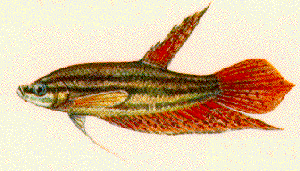
The European Integration |
The Origins of European Integration | A-D E-H I-Z |
| EU Institutions | ||
| The Decision Making Process | ||
| EU Policies: from A to Z | ||
| The EU in the World | ||
Fisheries Policy
Over-fishing is a global problem. But the combination of a large traditional fishing industry in the EU, the fact that fish know no frontiers, and the proximity of EU countries to each other has made an EU fishing policy inevitable. The fact that many traditional fishing communities have few if any alternative sources of employment makes the issue particularly sensitive. Over half a million people are employed in fisheries across the EU. Fishing is also a historic industry, and disputes between fishermen have been a traditional source of international conflict. The Common Fisheries Policy (CFP) exists to help manage EU fish stocks and to balance the interests of those Member States with fishing industries. Conservation of Fish StocksThe key rationale behind the CFP is that fish stocks need to be protected. The alternative is a downward spiral to the point where an economic fishing industry is no longer viable. The CFP sets conservation measures aiming to avoid catching too much fish and catching fish too young. Two core mechanisms are used to avoid too much fishing. Firstly, each year Member States agree on total allowable catches (TACs) which impose a limit on the output of the fleets. These TACs are shared out according to a key based on "relative stability" which is a commitment to stability in the allocation of fishing rights (quotas) among Member States. Secondly, the CFP imposes a limit on input by restricting the capacity of the fleet and/or its fishing effort. Technical measures including minimum net mesh sizes, closed areas, and seasons and minimum landing sizes are set by the Council to avoid catches of immature fish. Restructuring the fishing industryMulti-annual Guidance Programmes (MAGPs) are set for each Member State fixing objectives to ensure that the fishing effort expended by the EU fleets match the available resources. This is being achieved by reducing fishing capacity and/or activity through scrapping vessels or by reducing fishing effort (measured by multiplying the capacity of a vessel by the number of days spent at sea). EU funds have been set aside to help the sector in this necessary restructuring process. At the end of 1997, almost all Member States had met their overall objectives though efforts were still required in some fleet segments. DiscardsDiscards have become the subject of considerable debate recently. Studies have shown that discards occur for a variety of reasons from compliance with conservation measures to lack of marketing opportunities. The new Regulation on technical measures and the current Commission proposal on the combination of nets on board should help to reduce the level of discards. Fisheries and the environmentIn some areas, pollution may adversely affect fish resources but there is little if any evidence that problems associated with pollution are widespread. There are claims that fishing gear and activities can have an adverse impact on the marine environment. Although evidence is difficult to find, these real or potential problems need to be taken into consideration. International contextAround a quarter of the EU fishing catches come from international waters or from the waters of third countries with which the Community has concluded fisheries agreements. These agreements are an integral part of the CFP. Future of the CFPThe 2002 review is being used as an opportunity for a general appraisal of the CFP. This has involved a detailed questionnaire sent to the fisheries industry, environmental organisations, consumer organisations and others across the EU, as well as public meetings from the Aegean to Aberdeen. It covers issues such as how to improve conservation, how to involve fishermen themselves in decisions, and how to improve quality for consumers. | ||